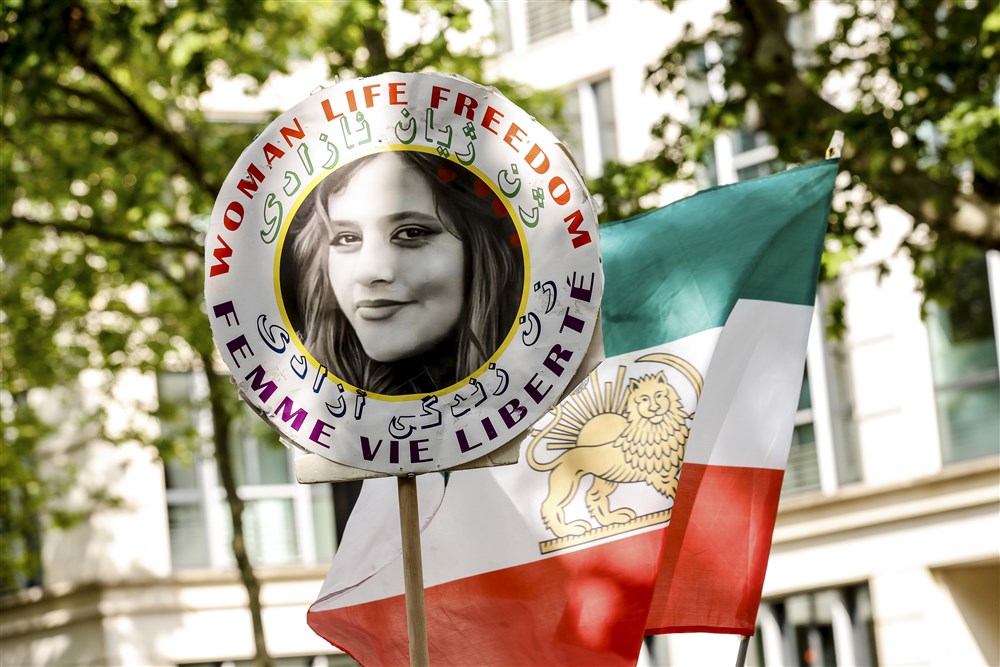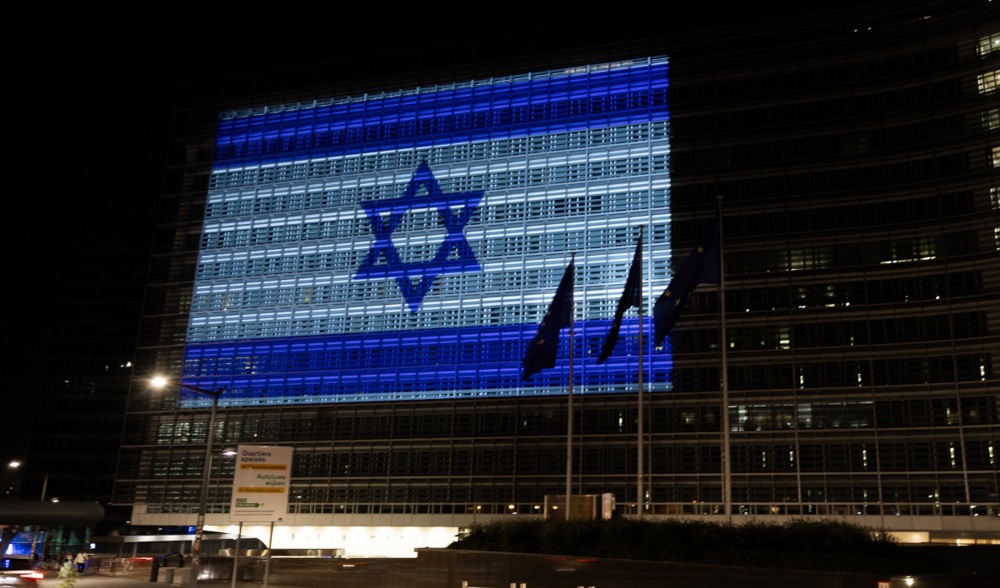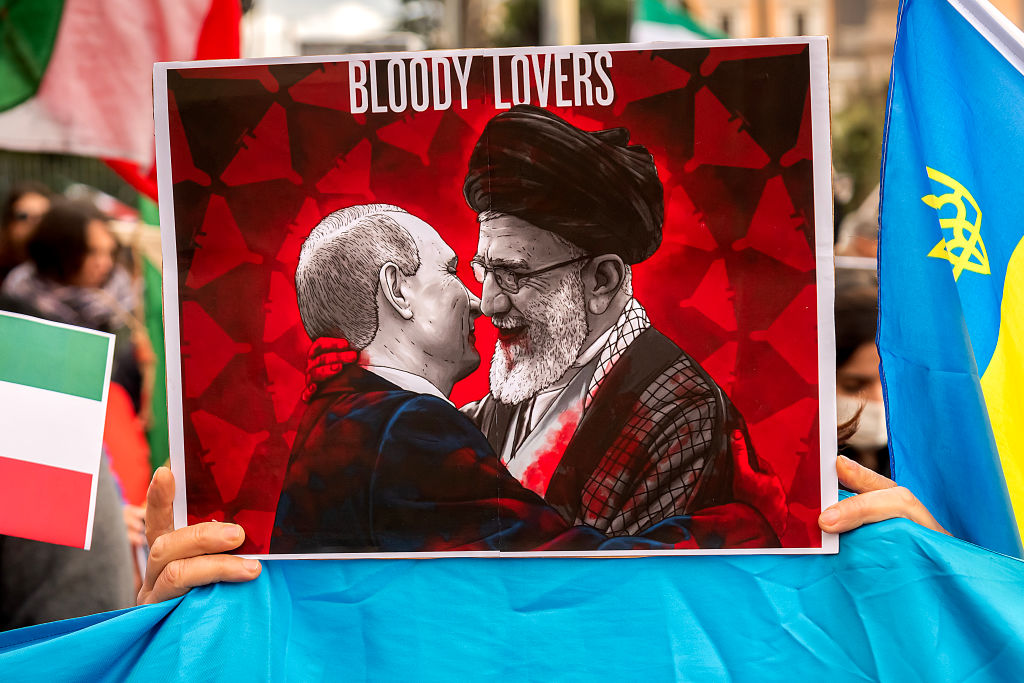The high-level contact between the Holy See and Iran, especially in the context of the conflict that broke out in the Holy Land, should not be surprising.
The Holy See and Iran maintain cordial relations despite some problematic situations, such as the denial in 2021 of a residence permit to a nun, Giuseppina Berti, who had been a missionary in Isfahan for almost thirty years. But today, with an ongoing conflict in the Holy Land, Iran looks to the Holy See as a possible partner, and the Holy See looks to Iran as a potential actor to avoid turning Israel’s conflict with Hamas into a regional conflict.
On October 30, therefore, Archbishop Paul Richard Gallagher, the Vatican “Foreign Minister”, had a telephone conversation with his Tehran counterpart, Hossein Amir-Abdollahian.
Tehran itself requested the phone call on October 30. Whether it was a move to show a desire for mediation or the need to start building a support network in the event of the conflict widening is yet to be understood.
The Holy See – which has had full diplomatic relations with Iran since 1966 – knows the risk. And this is probably why the Vatican made it known, through a note from the Holy See Press Office, that “in the conversation Monsignor Gallagher expressed the Holy See’s serious concern for what is happening in Israel and Palestine, reiterating the absolute need to avoid widening the conflict and to reach a two-state solution for a stable and lasting peace in the Middle East”.
Talking about the two-state solution in an official communication was a way of sending a clear message to Iran. Beyond concern for what is happening in Gaza and also for a possible escalation, the Holy See underlined its unambiguous support for Israel’s right to exist. The Vatican was making clear to Iran that there was no doubt or wiggle room on this.
Iran is a key and unavoidable partner for the Holy See
Iran is considered an essential partner on the Middle East Chessboard. The concensus among Vatican diplomats is that closing bridges with Tehran would create more significant problems. Diplomatic relations are characterised by ups and downs and common points of view, as one might expect between two states governed by religious leaders.
When Gallagher and Amirabdollahian met last September 25, Tehran had made it known that the purpose of the meeting was to talk about an alliance of religions against the profanation of sacred books.
At the same time, the statement from Tehran’s Foreign Minister, perhaps surprisingly, also called for a global focus on state terrorism. It stated that some nations use “sanctions as a political tool against other nations”. The statement highlighted how this perpetuation of sanctions has “had not only inhuman consequences but also complicated regional issues”.
Read with the benefit of hindsight, the statement was a warning that something could happen in territories affected by sanctions. Gallagher had made it known that he appreciated the restoration of diplomatic relations between Iran and Saudi Arabia. He would have underlined the importance of dialogue because it “contributes to the settlement of global problems and issues”.
It was a dialogue in which both sides highlighted issues, indirectly or directly, which are difficult for the other party.
The Holy See and Iran’s long-standing relations
The Holy See’s diplomacy has focused on developing friendly relations between the Gulf states. The Holy See viewed the Abraham Accords favorably, as it did the wider thawing of relations between Saudi Arabia and Israel. It has consistently pushed for a negotiated solution to the Iranian nuclear issue.
Despite the apparent differences and difficulties, relations between the Holy See and Iran are long-standing.
Under Benedict XVI, there was a flourishing of new improved relations. In 2006, the then-Iranian president Mahmoud Ahmadinejad in a letter to Benedict XVI expressed his desire for “the establishment of new human and political relations” between the Holy See and Iran, based on the common teachings “of the two prophets”.
In 2010, Cardinal Jean Louis Tauran acted as an intermediary on a trip to Iran that led to a further exchange of letters. And again, a joint alliance against secularism was called for, to which Benedict XVI responded once again by speaking of the centrality of human life.
In February 2015, Shahindokht Molaverdi, vice president of the Islamic Republic of Iran, visited the Vatican and was able to meet Pope Francis. She was also at the Pontifical Council for the Family, which immediately afterward announced the presence of an Iranian delegation at the World Meeting of Families in Philadelphia that same year.
Common values
An alliance between the Vatican and Tehran also becomes an alliance between religions: the role of the family and women, the joint commitment against the spread of assisted procreation and surrogacy and against gender ideology.
Another common theme might be the fight against extremism and fundamentalism.
The Holy See has always been a promoter of a nuclear agreement with Iran. As a founding member of the IAEA (International Atomic Energy Agency), the Holy See aims to develop nuclear technology for peaceful uses and to ban even the mere possibility of building nuclear weapons.
The Holy See hoped that the agreement reached with Iran could be a model for similar agreements with other Middle Eastern countries, considering – as Cardinal Silvano Maria Tomasi put it at the time – “that Iran is an integral part of the dialogue and negotiation that can lead to peace or, at least, to the immediate cessation of violence in the Middle East and in particular, concerning Syria, find a common, coordinated and reasonable response from the international community to the phantom Islamic State, which brings only harm and negative consequences not only in the region but also in other parts of the world”.
When, in 2018, the US Trump administration decided to abandon “the nuclear deal” with Iran, the Holy See became concerned, thinking of the possible instability caused in the region by an increasingly isolated Iran.
An alliance for brotherhood?
Relations with Iran are also important because Iran is a gateway to Shiite Islam. Over the years, Pope Francis has found fertile ground in Sunni Islam: he reopened relations with the Egyptian University of al Azhar. He met its Grand Imam Ahmed al Tayyeb several times, signing the Declaration on Human Fraternity in 2019.
The trip to Iraq in March 2021 presented the first opportunity to make contact with Shiite Islam, and Pope Francis’s meeting with Grand Ayatollah al Sistani – born in Iran but resident in Iraq and among the highest Shiite authorities – was a move in that sense.
Now, as the Pope prepares to return to the Emirates for COP28, the relationship with Iran could help maintain strong relations with Shiite Islam, too. This is why the Holy See does not want to deprive itself of a partner like Iran.
Will Iran take advantage of the situation, or will the Holy See contribute to peace in the region with its line of dialogue? The answer could prove vital to humanity as a whole.





Pope Francis’s Laudate Deum is a political exhortation, not a religious treatise